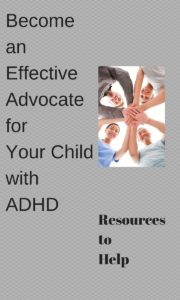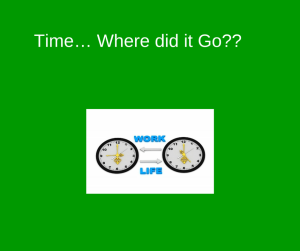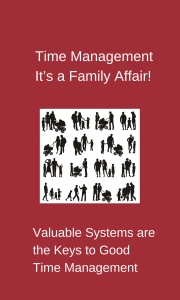 Articles Discover Strengths Advocacy Training Downloadable e-Books Support and Websites
Articles Discover Strengths Advocacy Training Downloadable e-Books Support and Websites
Does your ADHD child qualify for an IEP plan or section 504? Maybe yes, but the school must agree. The law has left a large gray area open for interpretation. The Individuals with Disabilities Education Act (IDEA) covers students who qualify for special education. Each public school child who receives special education and related services must have an Individualized Education Program (IEP). Generally, IDEA plans are more restrictive and more apt to apply to students with Learning Disabilities than those with ADHD.
Section 504 covers students who don’t meet the criteria for special education but who still require some accommodations in the regular classroom. According to attorney Lisa M. LaVardera, Esq., “Section 504 is essentially a civil rights anti-discrimination statute, designed to level the playing field between a person with a disability and his non-disabled peers.” Another major difference is that Section 504, as part of the Americans with Disabilities Act is, not federally funded. (1)
In either case, eligibility for accommodations and/or modifications is based on an impairment that substantially limits a major life activity. These life activities include, among a variety of other things, concentrating, learning, sitting, working, thinking, and interacting/cooperating with others. Since many of these are often affected by ADHD, your child may be included. A diagnosis alone, however, is not enough. AD/HD symptoms must be documented as significantly impacting learning or behavior through a specific evaluation process. The school may provide the service at no cost, but it is more likely that you will have to pay for it yourself. Plans are currently underway to curtail Medicaid funding that has helped pay for evaluations in the past.
Your goal is to advocate for the needs of your child – to speak up and to ensure they have the help they need to learn. Remember this: Know your child – his strengths as well as weaknesses. Build a good relationship with the teacher and other staff members. Help them identify possible accommodations and put them into practice. Examples of possible accommodations are seating students closer to the teacher, providing note taker, allowing more time on tests, requiring less homework, using daily report cards to monitor behavior or weekly planners to keep school work on schedule. A few simple changes may make a huge difference. Beyond that, know your rights, bring someone with you to official meetings and document everything!
Successfully advocating for your child can be a daunting task. This is an area where finding local resources, organizations, or parents who have already gone through the process and will “teach you the ropes” can be invaluable. Find a parent who has “gone before you”. Locate a support group or parent advocacy organization and get ready to work. Although you may ultimately decide you need to hire a professional advocate to negotiate for the help your child needs, there are a number of resources available to help you learn to navigate the system.
Articles:
Chart of the difference between IEP and 504 Plans – Understood.org
Individualized Education Plans Quick and easy article, but covers most of the bases- from Nemour’s Kids Health
Guidance on 504 Plans: Know your Rights 2-page overview (Updated in 2016 by the U.S. Department of Education)
Casting a Wider Net: Section 504 Revisions – An extensive article by Lisa M. LaVardera, Esq.
FREE Guide to Education Law for Students with ADHD from ADDitude Magazine
Are you ready to retain a lawyer to settle an IEP issue with your child’s school district? If so, this article and the attached worksheet will walk you through the process.
Explore your Child’s Strengths
VIA Strength Survey for Children for Youth ages 10 to 17
Measures 24 Character Strengths for Children
For more on Character Strengths, see this article from Hands-on Scotland: How to help children recognize and develop their strengths.
Parent Advocacy Training
Exceptional Children Assistance Center – Technical Assistance for Parent Centers
Information about the approximately 100 government-funded parent centers in the U.S. that teach parents of children with ADHD (or any other disabling condition) how to advocate for the services their children require. Every state has at least one center.
Find a Parent Center near you.
Request for an Independent Evaluation at public expense – Sample letter (Only applies to IEPs) Specific to California Laws- (Link works) Other Sample letters and forms for IEPs and 504
Note: A school psychologist once contacted our non-profit when I was manning the phones. She trying to find affordable treatment for a low-income student who was struggling in class. When asked why the school wasn’t stepping forward to provide the funding, she replied, “…Regarding the school district paying for an evaluation, I can see the smoke going up from our administrators—at even the suggestion. We are instructed to be ever-so-careful when we “encourage” that a child be evaluated. If we sound like we are recommending or insisting, the school district could be held liable to pay for it. In other words, that is an absolute no-no.”
eBooks to Download
Guidance on 504 Plans Issued by U.S. Department of Education (2016 )- Clarifying the rights of students with ADHD in our nation’s schools. – “Regardless of how well he or she performs in school, a student who has trouble concentrating, reading, thinking, organizing or prioritizing projects, among other important tasks because of ADHD may have a
disability and be protected under Section 504.” 42-page document Know your Rights 2-page overview
An easy to read, step by step Guide to the Individualized Education Program. Provided by the Office of Special Education and Rehabilitation Services. 2000. Now in the Archives, but available as a PDF as well as in audio.
Bringing Knowledge to the Table – How to be an Effective Advocate for your Child – 42-page e-book complete with active links on the Special Education process. From IEPs to 504 accommodations it covers both the law and practical application. Includes valuable links.
Websites
CHADD (Children and Adults with ADHD) specializes in in-depth information about ADHD and Educational Services in Public Schools – Basic articles are from the National Resources Center for ADHD and available for all, but many articles, especially those about advocacy, are reserved for members. (Families- $53 a year)
National Center for Learning Disabilities – For more than 35 years, NCLD has committed itself to empowering parents, transforming public schools, and advocating for families and children challenged by learning and attention issues.
Understood – For learning and Attention issues – 15 nonprofit organizations have joined forces to support parents of the one in five children with learning and attention issues throughout their journey. Help children unlock their strengths and reach their full potential. Includes a secure online community, practical tips, and more.
LD Online has a great introduction to LD/ADHD symptoms and accommodations. Copy and paste this URL: http://www.ldonline.org/educators – The official site of the National Joint Committees on Learning Disabilities, LD online provides pertinent information for parents, educators, even kids. the basics, expert advice, and personal stories.
Wrightslaw.com Complete and accurate, Wright’s Law offers a wealth of information about disability law and how it may pertain to school – Applies to all disabilities, but ADHD has its own section.
See Wrightslaw’s Yellow Pages for Kids.com – Directory – Find Disability Specialists and the Organizations that may help your family (Free Listings). Not specific to ADHD concerns, but a great resource! They list a wide variety of services: educational consultants, psychologists, educational diagnosticians, academic therapists, tutors, coaches, advocates, and attorneys for children with disabilities. You will also find special education schools, learning centers, parent groups, community centers, grassroots organizations, and government programs for children with disabilities
Smart Kids with LD A great little site offering targeted information with a gentle touch.
Understanding Special Education provides help navigating the special education system as well as how to work collaboratively within your school district. The site provides parent-friendly information on all aspects of the process as well as a Q & A section and a parent-to-parent forum. (Host: Michele Hancock, M.A., P.P.S)
1) Casting a Wider Net: Section 504 Under the 2008 ADA Amendments Act (ADAAA) © Lisa M. LaVardera, Esq. https://addfreesources.net/casting-a-wider-net-section-504-revisions/
Resources compiled by Joan Jager – All sources link as of March 17, 2015
“Image courtesy of Ambro/FreeDigitalPhoto.net” Modified on Canva.com
Follow ADHD – ADD’s board Advocacy help – Education on Pinterest.












